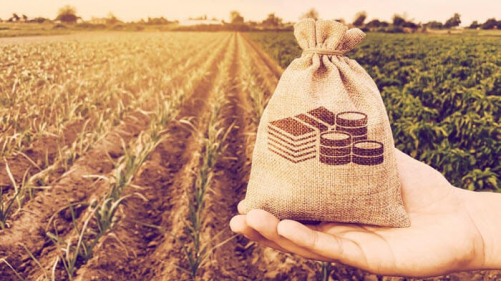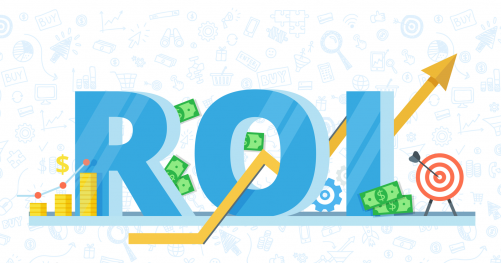Tokenomics 101: What you need to know
Sep 15, 2022
Tokenomics is a combination of the words “token” and “economics” – a token economy built on blockchain. The developer considers the economic characteristics of a cryptocurrency: issuance, properties, distribution, supply, demand, etc.
Tokenomics is a unit of digital currency built by cryptocurrency projects on an existing blockchain. Like any other regular currency, tokens hold a specific value and are exchangeable. Cryptocurrency projects are always predefined and create an algorithmic release schedule for tokens. We can accurately predict the number of coins in circulation at a particular time. The distribution of coins among the various stakeholders is also pre-calculated. While changing the release time and distribution plan is technically possible, this process is complicated to follow.
How does Tokenomics work?
Tokenomics establishes the economy of a crypto project by creating incentives for token holders and identifying token utility, a significant factor behind their demand. The different variables developers use to influence other aspects of tokenomics include
Supply
A key criterion in the tokenomics of various projects is the supply of coins. You need to factor in the total as well as the circulating supply. For example, the total supply limit of Bitcoin (BTC) is 21 million coins, and the final coin is expected to be minted around 2140. Meanwhile, Solana (SOL) has a total supply of 508 million SOLs.
Non-fungible token (NFT) projects also limit the number of tokens that can be minted. For example, CryptoPunks has the 10,000 Punks mark in v1 and v2 contracts, while Bored Ape Yacht Club has a total of 9,999 NFT. Rarity and exclusivity drive the price of NFTs.
Token allocation and vesting time
Allocating tokens to holders is a standard in crypto projects. In order to establish trust in the product, venture capitalists and developers are locked into allocated tokens for a certain period of time. The vesting phase causes developers’ tokens to be locked for a certain period of time to avoid being affected by pumping and dumping schemes.
Mining and Staking
Currently, early blockchains like Bitcoin and Ethereum issue tokens to incentivize miners to validate transactions. This process is called Proof-of-Work (PoW). Miners must use their computing power to mine new blocks and add them to the blockchain. In proof-of-stake (PoS) blockchains that have implemented a validator staking model, rewards will be given to those who have locked a certain amount of coins in a smart contract. With the consensus layer upgrade, Ethereum is moving toward this model.
Yield farming
Yield farming allows anyone holding cryptocurrency to earn more tokens. You can lend money to anyone who wants to borrow money through a smart contract, earning both interest and principal in the form of tokens. Yield farming generates huge profits in decentralized exchanges (DEXs).

Token burning
To prevent inflation, cryptocurrency protocols need to burn tokens to remove them from circulation. When the number of tokens in circulation becomes scarce, the price will increase. Binance burns BNB tokens quarterly to reduce the total supply. In November 2019, Stellar burned 55 billion XLM tokens, representing about 50% of the total supply, resulting in a short-term price increase of more than 30%.
Tokenomics Analysis
The supply and demand of cryptocurrencies are the main determinants of their prices.
Supply side
Ultimately, economics is all about understanding the supply and demand of a currency. These two factors give a detailed look at how hot a given currency is. The same theory works in tokenomics, giving participants a clear picture of the supply and demand for a given token.
Let’s examine the supply side first. We need to determine whether the value of a token will increase because of objective factors or it will be inflated, by just increasing the supply. Economic theory holds that the value of tokens will increase if there are fewer tokens. This phenomenon is called deflation. On the other hand, if the total number of tokens increases, the value will decrease, which is known as inflation.
When testing the supply side, you don’t need to consider factors like utility, ability to generate income for owners, or others. The only criterion is the change of supply over time. Factors to consider and consider include the number of tokens issued, and the amount set by the algorithm for future mining or issuance during the issuance.
Checking the supply of Bitcoin will help to better understand the supply side. As mentioned, its supply is capped at 21,000,000 BTC, which is released at a rate of halving every four years or at a slower rate until 2140. Over 19,000,000 BTC has been released mined in June 2022, so another 2,000,000 in processing will be released in the next 120 years. This means that only about 10% of Bitcoin will be mined over 100 years from 2022, excluding any serious inflationary pressures.
Demand side
Only the supply side does not create any value. Instead, it is the demand side that makes a token value.
Let’s say you have 10 gorgeous baskets at home. Thinking that the design of the basket is so sophisticated, you begin to believe that there is a great demand for the baskets. You announce that you won’t be taking any more home, creating a fixed supply. The baskets are now worth diamonds.
Fixed supplies do not automatically translate into value. People need to believe that things have value now and will carry them in the future. To determine if a token is claimed, you need to check return on investment (ROI), game theory, and memes.
ROI
ROI means the cash flow the token is expected to generate for someone just holding. An Avalanche (AVAX) retailer, for example, can stake tokens to secure the network and earn more AVAX in the process. Some protocols allow stakers to collect a portion of the revenue from the protocol. For example, anyone who holds SushiSwap (SUSHI) is entitled to the earnings of the protocol itself.
If the token has no ROI, people will not intend to hold it. If you conclude that others trust the token to hold value, you will be willing to put your money into it.

Community energy levels
Community enthusiasm provides insight into the beliefs of those who have put their money or feelings in the token. Measure their energy levels on Discord, Twitter, and other social media. Determine how long people have been active in the community. Are they willing to make tokens part of their identity?
Furthermore, the energy level of the community is the main driver of future demand for the token. A good example of how simple trust can drive a token up is Dogecoin (DOGE). A meme token has made it to the list of top tokens thanks to its cult followers.
Game theory
Game theory is used for mechanics applied in any technology. In a word, it is the systematic study of how decisions are made by players in a system. It uses mathematical models of conflict and cooperation to understand the behavior of decision-makers. Applied in the field of cryptocurrency, game theory allows developers to evaluate the decision-making process of stakeholders in an interactive environment.
Elements in the design of tokenomics help increase demand for tokens. Lockups have proven to be a good game theory in tokenomics. It has a protocol that incentivizes token holders to lock tokens in the contract and, in return, receive more rewards.
Epilogue
In the last article, you and Unicoin learned about tokenomics, the factors that affect the value of tokens in blockchain projects. To be self-sustaining, developers need to figure out how tokens should work in an ecosystem.